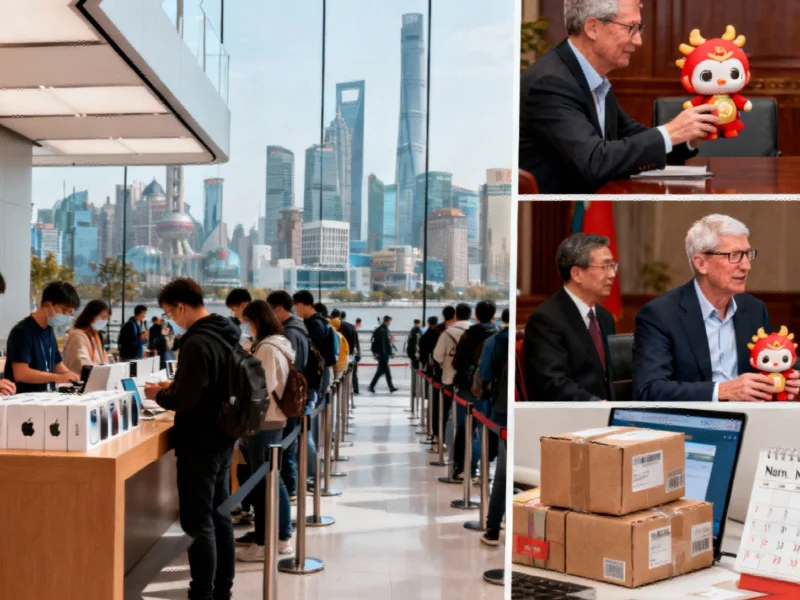The AI Industry’s Fossil Fuel Dependency
As artificial intelligence capabilities advance at breakneck speed, few users consider the substantial environmental footprint required to power these sophisticated systems. The AI revolution, celebrated for its transformative potential across industries, is quietly driving a massive expansion of fossil fuel infrastructure across the American landscape. From West Texas to Louisiana, natural gas-powered data centers are reshaping both energy grids and local communities.
This trend represents a surprising revival for the fracking industry, which climate advocates had previously criticized for environmental concerns including water contamination and induced seismicity. The scale of this development is staggering – Poolside’s Horizon facility in West Texas alone will generate two gigawatts of computing power, equivalent to the Hoover Dam’s entire electric capacity, but through burning fracked gas rather than harnessing renewable hydropower.
Local Communities Bear the Brunt
For residents near these developments, the AI boom has brought disruptive changes. Arlene Mendler, who lives across from OpenAI’s Stargate data center in Abilene, Texas, described how construction has transformed her once-tranquil neighborhood. “It has completely changed the way we were living,” she told reporters, noting that the bulldozed mesquite shrubland and constant construction activity have replaced the peace and quiet she sought when moving to the area 33 years ago.
Water scarcity presents another critical concern, particularly in drought-prone regions like West Texas. While companies claim minimal water usage for their closed-loop cooling systems, experts note that the increased electricity demand creates substantial indirect water consumption at power generation facilities. This AI boom fuels natural gas expansion despite environmental concerns, creating complex trade-offs between technological progress and resource conservation.
The Geopolitical Justification
AI companies defend their energy strategy as necessary for maintaining competitive advantage against China. Chris Lehane, OpenAI’s vice president of global affairs, recently argued that the United States needs to generate approximately a gigawatt of energy weekly to keep pace with China’s massive infrastructure buildout, which included 450 gigawatts and 33 nuclear facilities constructed in just the past year.
This geopolitical framing has found receptive ears in Washington. The July 2025 executive order fast-tracks gas-powered AI data centers by streamlining environmental permits and offering financial incentives, while explicitly excluding renewable energy projects from similar support. The policy creates favorable conditions for the continued expansion of fossil fuel-dependent computing infrastructure across multiple states.
Questioning the Necessity of New Capacity
Despite the rush to build new power generation, research suggests alternative approaches might accommodate AI’s energy demands without massive fossil fuel expansion. A Duke University study found that utilities typically use only 53% of their available capacity annually, indicating significant room to handle new demand through better utilization of existing infrastructure.
The researchers estimated that if data centers reduced electricity consumption by roughly half during peak demand periods, utilities could handle an additional 76 gigawatts of new load – more than enough to cover the 65 gigawatts data centers are projected to need by 2029. This approach could provide breathing room to develop cleaner alternatives while still meeting computational demands. These industry developments highlight the complex interplay between technological advancement and sustainable practices.
The Interdependent AI Ecosystem
The AI sector has evolved into a tightly woven network of dependencies, with companies like OpenAI, Microsoft, Nvidia, Broadcom, and Oracle all relying on each other in a self-reinforcing loop. This interconnectedness creates systemic risk – if the foundation cracks, substantial stranded assets could remain, both digital and energy-related.
OpenAI’s ability to meet its obligations has become “increasingly a concern for the wider economy,” according to financial analysts. The situation mirrors other sectors where rapid expansion creates vulnerability, similar to market trends observed in media and technology industries.
Emerging Alternatives and Long-Term Solutions
Despite the current reliance on fossil fuels, significant investment is flowing toward cleaner energy alternatives that could eventually power AI infrastructure. Private funding is increasingly directed toward small modular reactors and advanced solar installations, while fusion energy companies have attracted substantial backing from AI leaders.
The growing interest in sustainable energy solutions is evident in the private investment in fusion energy, which has approached $10 billion as investors bet on breakthrough technologies. Similarly, related innovations in energy storage demonstrate the potential for cleaner alternatives to support data center operations.
The Contract Conundrum
Current agreements between AI companies and utility providers typically span 10-15 years, raising questions about what happens when these contracts expire. Meta has guaranteed it will cover Entergy’s costs for new Louisiana generation for 15 years, while Poolside’s lease with CoreWeave runs for a similar duration. The long-term fate of these fossil fuel assets remains uncertain, particularly as cleaner alternatives become more economically viable.
This situation creates potential stranded asset risk for utility customers, who may face higher electricity rates to cover infrastructure costs long after tech companies’ contracts conclude. The rapid pace of energy transition could leave communities bearing the financial and environmental burden of today’s energy decisions for decades to come.
As the AI industry continues its explosive growth, the tension between immediate computational needs and long-term sustainability represents one of the most significant challenges facing both technology companies and the communities hosting their infrastructure. The choices made today will shape not only AI’s capabilities but also the environmental legacy of this technological revolution.
This article aggregates information from publicly available sources. All trademarks and copyrights belong to their respective owners.
Note: Featured image is for illustrative purposes only and does not represent any specific product, service, or entity mentioned in this article.



